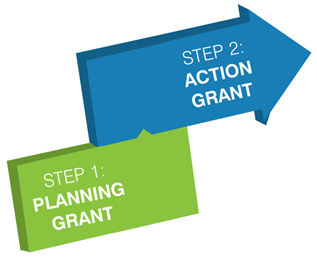What Do We Mean by Equity-Based Community Greening?
The City of Watertown is conducting an equity-based green infrastructure program to address the climate change risks facing our most vulnerable populations. These risks include flooding, extreme storms, and extreme heat. The project will help implement priorities identified by residents and stakeholders during previous phases of work – priorities that include increasing green infrastructure and shade trees.
The project will help raise awareness of green infrastructure benefits, include residents in the design and decision-making process, and lessen the severity of storm-generated flooding, heat waves, and the urban heat island effect. This effort is a continuation of Watertown’s Municipal Vulnerability Preparedness (MVP) Planning Grant process and two regional MVP Action Grant efforts in the Mystic River and Charles River Watersheds, and is funded by the state’s MVP program. Check out some of the work that has been completed in Phase One of the initiative! We'll keep posting our findings - so check back here often!
What is the MVP Program?
In 2017, the Massachusetts Executive Office of Energy and Environmental Affairs (EEA) initiated the Commonwealth’s Municipal Vulnerability Preparedness (MVP) grant program to help communities plan for climate change and take action toward adapting for future impacts. The program includes two parts:
1. MVP Planning Grants: define hazards, identify vulnerabilities and strengths, prioritize action items
2. MVP Action Grants: implement priority adaptation actions identified during the planning process
What are Priority Equity Areas?
Watertown’s green infrastructure investments will be directed towards Priority Equity Areas, which were determined by layering demographic and environmental factors such as:
- EPA-defined Environmental Justice areas. View Watertown’s EJ map online.
- Areas with a high concentration of renters
- Areas with a high concentration of seniors
- Areas with a high concentration of low-income residents
- Percent tree cover
- Percent impervious surface
- Flood and precipitation data and projections
- Urban heat island data and projections
- And more!
What is Green Infrastructure?
Green infrastructure mimics natural processes to capture, infiltrate, and treat rainfall and stormwater runoff. Stormwater runoff is rain or snow melt that soaks into the soil and recharges groundwater, naturally drains into waterbodies, or is conveyed through a series of pipes until it is discharged into a nearby waterbody. Stormwater runoff, if not properly treated, can carry pollutants into waterbodies and be harmful to public health and safety.
With rainfall events becoming increasingly intense due to climate change, much of the stormwater infrastructure designed decades ago is now undersized, which can also cause stormwater flooding. Flooding can also occur in areas where the City’s stormwater system becomes overwhelmed due to high amounts of impervious surfaces.
What are we doing about it?
Green infrastructure can include trees and vegetation, and can help decrease flooding while also offering community and environmental co-benefits including:
- Promoting biodiversity by adding native flora and recommended tree species, and tying into Watertown’s pollinator program
- Filling gaps in our urban forest
- Enhancing groundwater recharge in highly paved neighborhoods
- Removing pollutants such as phosphorus before water is discharged into the Charles River
- Improving air quality. For example, trees absorb pollutants such as nitrogen dioxide and sulfur dioxide and produce oxygen.
- Trees also absorb carbon dioxide, helping to sequester climate-warming pollutants and lessen Watertown’s contribution to global climate change.
- Trees can also reduce energy use in nearby buildings by providing shade during warm months, reducing the need for air conditioning.
Watertown already has some great examples of green infrastructure throughout the City, and now seeks to add more in areas that will help protect vulnerable populations and provide maximum environmental, public health, and quality of life benefits. Here are some examples of the City’s existing green infrastructure:
How Can I Get Involved?
Want to be part of the solution? Take these quick steps!
Keep an eye out for upcoming engagement opportunities, including site walks, pop-up events, and charettes to co-create green infrastructure designs. More information is coming soon!
Share your ideas and questions with the resilient@watertown-ma.gov email
Share your thoughts on social media, using the hashtag #ResilientWatertown
Check out our related blog posts for more information, including:
5 Surprising Benefits of Urban Trees
Working Towards a Resilient Region
Momentum is Building for Climate Action in Watertown – Get Involved!




